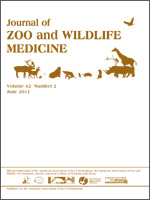Salmonella and Yersinia are important enteropathogens in poultry and can affect birds of all ages, including embryos. These food-borne zoonotic enteropathogens are of great economic and medical concern worldwide and are intensely studied in poultry. Information regarding the prevalence of these bacteria in wild birds is scarce and biased toward avian species ecologically linked to humans, which have often been incriminated as both reservoirs and disseminators of these enteropathogens. The prevalence of Salmonella and Yersinia recovered from both the feces and eggs in a population of female pied flycatchers (Ficedula hypoleuca) breeding in nest-boxes in central Spain was evaluated. Salmonella arizonae was recovered from the feces of one female but was not recovered from eggs. Yersinia was not detected in either the feces or eggs. These results may suggest that Salmonella and Yersinia may be uncommon in this population studied and may indicate that these birds are unlikely reservoirs of Salmonella and Yersinia.
How to translate text using browser tools
1 June 2011
Prevalence of Salmonella and Yersinia in Free-Living Pied Flycatchers (Ficedula hypoleuca) in Central Spain
Rafael Ruiz-de-Castañeda,
Ana I. Vela,
Elisa Lobato,
Víctor Briones,
Juan Moreno
ACCESS THE FULL ARTICLE
egg
eggshells
feces
Ficedula hypoleuca
Pied Flycatchers
Salmonella
Yersinia





